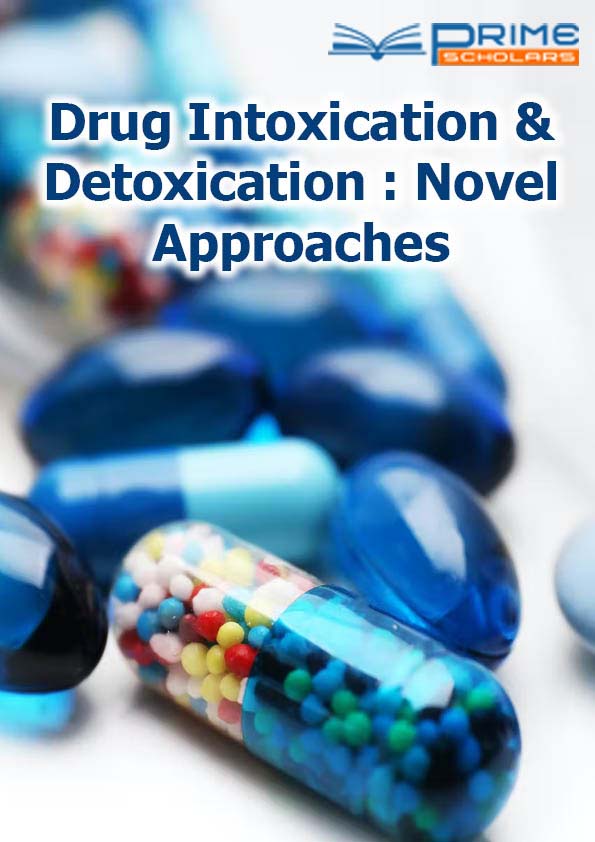Commentary - (2025) Volume 6, Issue 2
Empowering Medicine: The Evolution of Drug Carriers
Sora Ando*
Department of Drug Delivery, Meiji University, Meiji, Japan
*Correspondence:
Sora Ando, Department of Drug Delivery, Meiji University, Meiji,
Japan,
Email:
Received: 14-May-2024, Manuscript No. DIDNA-24-19868;
Editor assigned: 16-May-2024, Pre QC No. DIDNA-24-19868 (PQ);
Reviewed: 30-May-2024, QC No. DIDNA-24-19868;
Revised: 13-Jun-2025, Manuscript No. DIDNA-24-19868 (R);
Published:
20-Jun-2025, DOI: 10.36648/DIDNA.6.2.59
Description
In the dynamic realm of pharmaceuticals, the journey from drug formulation to therapeutic efficacy often relies on innovative carriers that ferry medications to their intended targets within the body. These drug carriers, ranging from nanoparticles and liposomes to polymeric micelles and exosomes, play a pivotal role in enhancing drug stability, bioavailability and targeted delivery. In this article, we embark on a journey through the fascinating world of drug carriers, exploring their diverse forms, applications and the transformative impact they have on modern medicine. Before delving into the intricacies of drug carriers, it's essential to understand why they are indispensable in pharmaceutical formulations. Many drugs, particularly those with poor solubility, limited stability or low bioavailability, face significant challenges in reaching their intended targets within the body. Moreover, certain medications may exhibit offtarget effects or cause systemic toxicity when administered conventionally. Drug carriers offer a solution to these challenges by encapsulating or conjugating drugs, shielding them from degradation, improving their solubility and facilitating targeted delivery to specific tissues or cells. By harnessing the unique properties of drug carriers, pharmaceutical scientists can optimize drug pharmacokinetics and pharmacodynamics, enhance therapeutic efficacy, and minimize adverse effects. Nanoparticles are submicron-sized particles typically composed of biocompatible materials such as polymers, lipids or inorganic compounds. These versatile carriers can encapsulate drugs within their core, enabling controlled release and targeted delivery to specific tissues or cells. Nanoparticles offer several advantages, including high drug loading capacity, prolonged circulation time and the ability to overcome biological barriers such as the blood-brain barrier. Liposomes are spherical vesicles composed of lipid bilayers, similar to cell membranes, which enclose an aqueous core. These lipid-based carriers can encapsulate hydrophilic drugs within their aqueous interior and hydrophobic drugs within their lipid bilayers, offering versatility in drug delivery. Liposomes are biocompatible, biodegradable and highly customizable, making them ideal candidates for drug delivery applications. Polymeric micelles are self-assembling structures formed from amphiphilic block copolymers, which spontaneously organize into nanoscale micellar structures in aqueous solutions. These micelles can encapsulate hydrophobic drugs within their core, solubilizing them and enhancing their bioavailability. Polymeric micelles offer excellent stability, prolonged circulation time and the ability to passively target tumour tissues through the Enhanced Permeability and Retention (EPR) effect. Exosomes are extracellular vesicles secreted by cells that play a crucial role in intercellular communication. These nanoscale vesicles can be harnessed as natural drug carriers, capable of encapsulating therapeutic cargo and delivering it to target cells. Exosomes offer inherent biocompatibility, low immunogenicity and the ability to cross biological barriers, making them promising candidates for drug delivery and regenerative medicine applications. Drug carriers are extensively used in cancer therapy to improve the efficacy and safety of chemotherapeutic agents. Nanoparticle-based formulations, such as liposomal doxorubicin and paclitaxel nanoparticles, enable targeted delivery of anticancer drugs to tumour tissues while minimizing systemic toxicity. Nanoparticle-based drug carriers, such as polymeric nanoparticles and lipid nano carriers, enable targeted delivery of drugs and nucleic acids to the brain, offering potential treatments for neurological disorders and brain tumours. These carriers enable controlled release of vaccine antigens, promoting robust immune responses and long-lasting immunity. Tailoring drug carriers to individual patient characteristics and disease profiles holds promise for personalized medicine. Advances in biomaterials, nanotechnology and pharmacogenomics enable the development of patientspecific drug delivery systems optimized for efficacy and safety.
Citation: Ando S (2025) Empowering Medicine: The Evolution of Drug Carriers. Drug Intox Detox: Novel Approaches. 6:59.
Copyright: © 2025 Ando S. This is an open-access article distributed under the terms of the Creative Commons
Attribution License, which permits unrestricted use, distribution, and reproduction in any medium, provided the original author
and source are credited.
